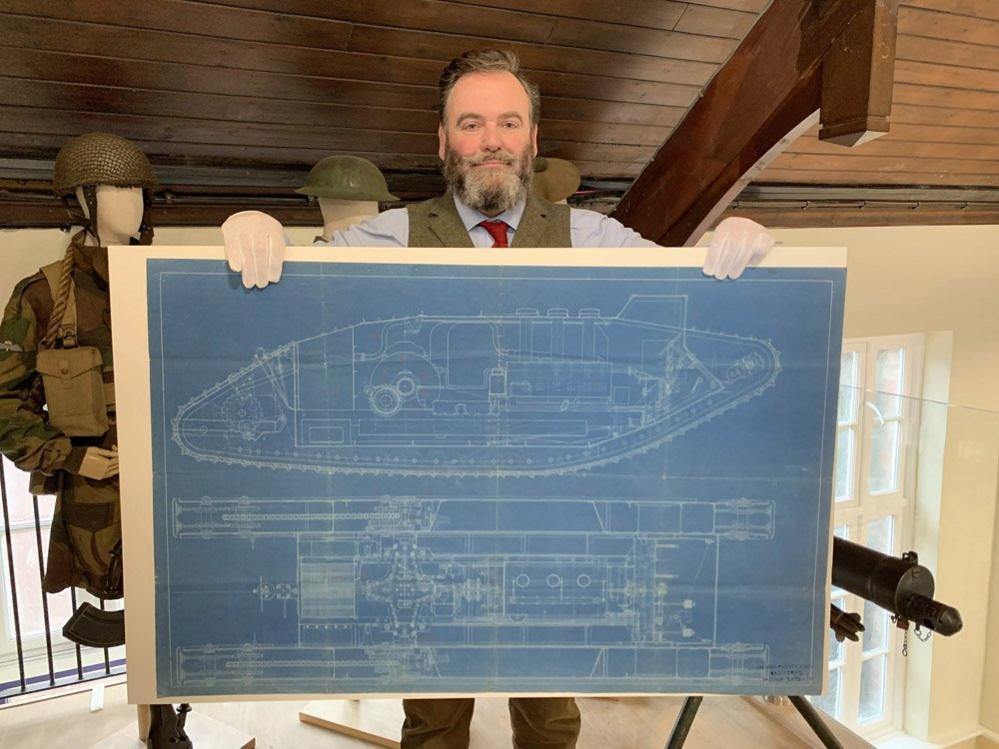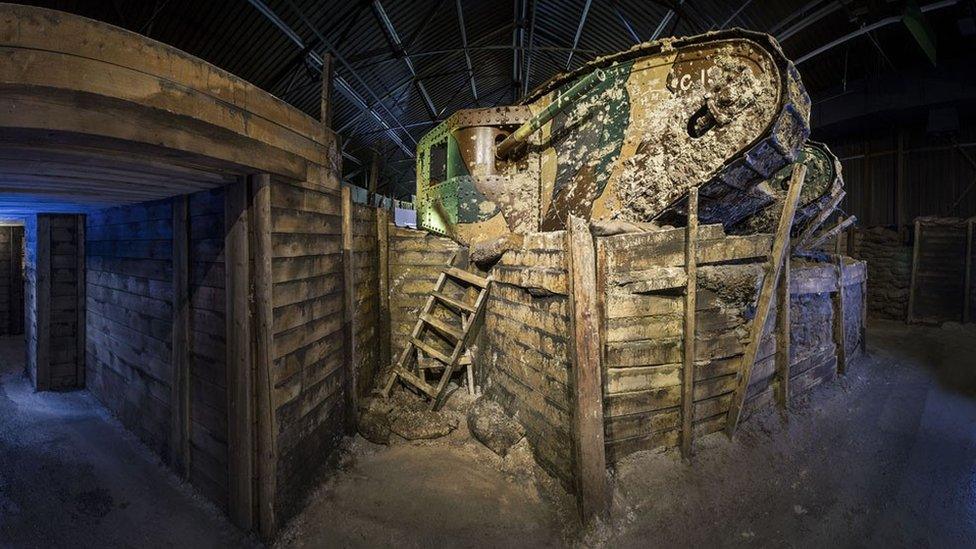Mark I tank: Blueprint for first ever tank bought at auction
- Published

Auctioneer Paul Laidlaw said the blueprint exceeded his expectations
The blueprint for the world's first tank has been bought at auction.
The Tank Museum in Dorset secured the plans and patent for the Mark I tank for a hammer price of £14,600.
They date to May 1916, just four months before the tank took part in the Somme Offensive in World War One.
Auctioneer Paul Laidlaw said: "Many auctioneers will go through their whole careers without handling an object that is so important it should not be in the hands of a collector."
The museum said the documents, including the 44in [112cm] by 28in [71cm] blueprint, were the "birth certificate" for the tank.
The Mark I followed other prototypes but was the first to go into production, made by agricultural machinery company William Foster & Co of Lincoln.

The tank, seen here at The Tank Museum, took part in the Somme Offensive
The patent describes the tank as "transport vehicles propelled by an endless moving chain track" in the shape of a "lozenge or diamond".
It says they are adapted to traverse conditions that are "exceedingly difficult owing to the presence of obstructions, such as trenches, parapets, shell holes, craters and so forth".
The items came from a private vendor whose family had owned them for some time.
Museum curator David Willey said he was "delighted" to have acquired them.
He said: "This blueprint is the only one known for a Mark I, so we would like to think we are the most appropriate place for these items."
Tim Allan, an officer who served in The Royal Tank Regiment and who backed the auction, said: "I am particularly proud to be associated with the acquisition of something so close to my heart and own career."
Mr Laidlaw said: "When I laid eyes on the blueprint its immediate visual impact far exceeded my expectations.
"It's like seeing an X-ray of a mechanical leviathan and gives some insight into why these 'land ships' induced such shock and awe in the troops of 1916."

Follow BBC South on Facebook, external, Twitter, external, or Instagram, external. Send your story ideas to south.newsonline@bbc.co.uk, external.
Related topics
- Published18 May 2018

- Published6 June 2015
